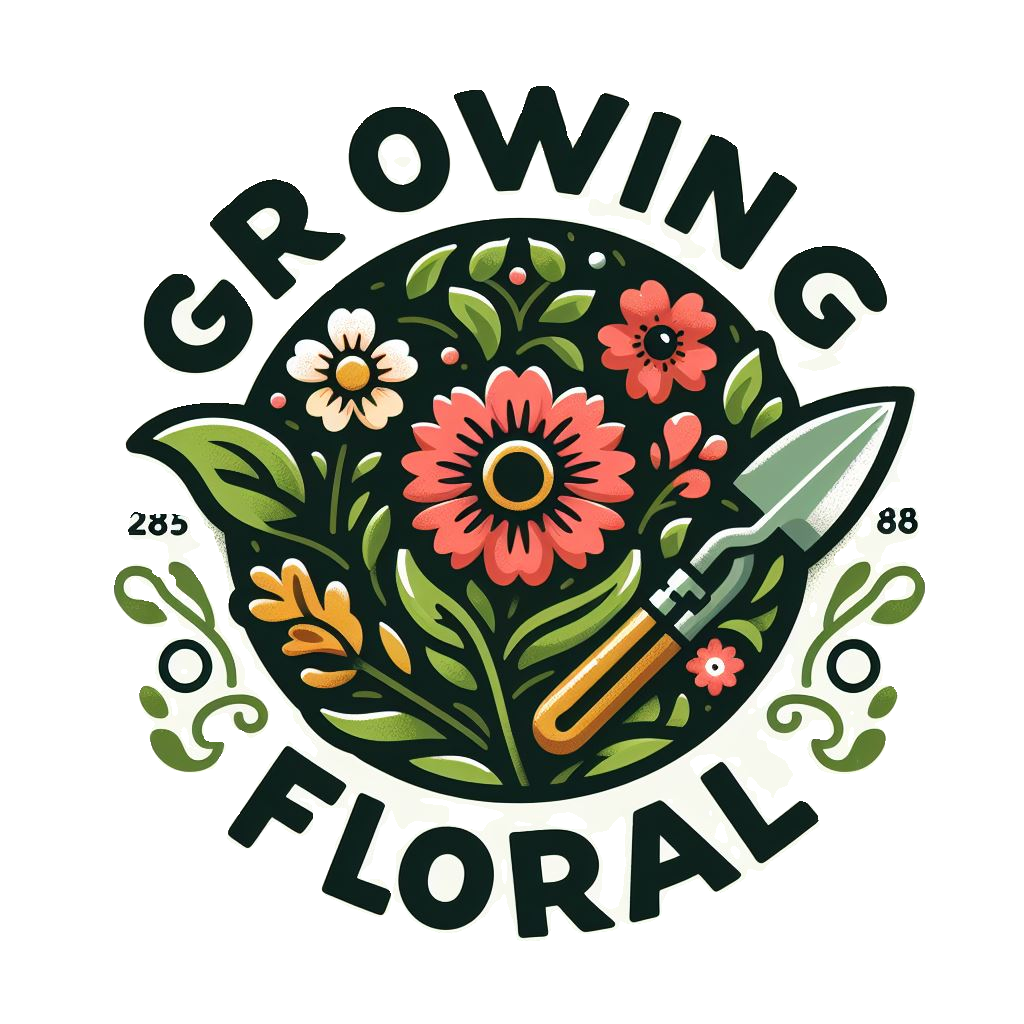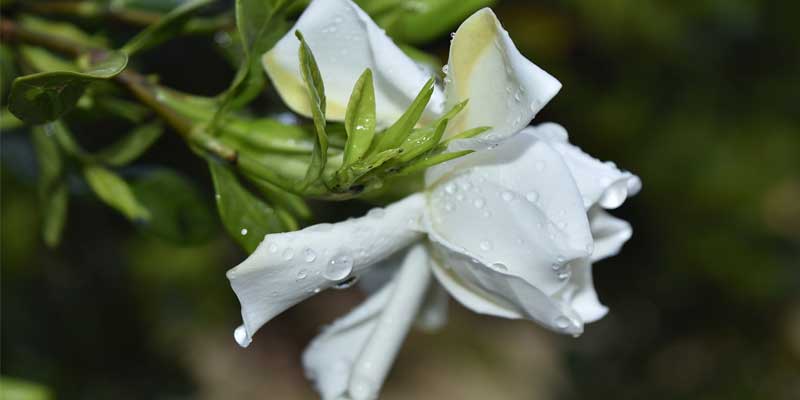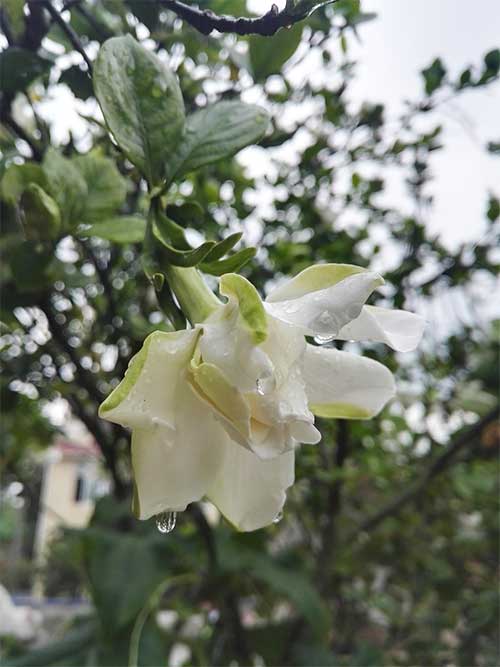Gardeners prize gardenias for their beauty and elegance, characterized by enchanting fragrance and delicate blooms. Cultivating these exquisite plants, however, demands meticulous attention to their water needs; achieving the perfect balance in watering is imperative for ensuring not just the health but also the longevity of these botanical wonders.
This comprehensive guide delves into the precise art of watering gardenias, offering not only insights but also practical tips. With this knowledge, you can ensure your gardenias thrive perpetually throughout the year.
How Often To Water Gardenia
For the health and vitality of gardenias, it is crucial to water them appropriately. Aim for a consistent moisture level in the soil – neither too dry nor overly saturated – as these plants are sensitive to both extremes. Climate, and seasonality factors such as container size, along with environmental conditions will dictate your watering frequency.
During the growing season, water gardenias deeply 1-2 times per week; however, this frequency should be adjusted based on factors such as soil moisture, plant age, and health. You must monitor your gardenias rigorously for signs of water stress by adjusting your watering schedule promptly when necessary.
As for the dormant season, reduce watering frequency significantly–but always maintain moist soil conditions. Striking the right balance promotes year-round lush foliage and abundant blooms in your gardenias.
Understanding Gardenia Watering Needs
To begin, one must understand the precise water requirements of gardenias before delving into their watering schedules. Gardenias thrive in soil that is consistently moist yet well-drained; they are sensitive to excessive or insufficient watering, a balance that must be struck with precision.
Gardenias flourish in soil with even moisture, yet devoid of waterlogging. Root rot and various fungal diseases may arise from excessively damp soil, whereas stress and wilting leaves can result from arid conditions within the ground.
The last one is environmental factors. Temperature, humidity levels, and sunlight exposure – these are the factors that can actively influence water absorption rates in gardenias. Warmer temperatures coupled with heightened sunlight intensity may accelerate evaporation; consequently, this necessitates a more frequent watering regimen for optimal growth conditions.
Developing a Watering Schedule
The key to maintaining your gardenias’ health and vitality is creating a tailored watering schedule that meets their specific needs. Here, we present a step-by-step guide; that will assist you in establishing an effective routine for watering:
1. Assess Soil Moisture: Before you water, assess the soil’s moisture level by inserting your finger approximately an inch into the soil near the plant’s base: this is a crucial step in maintaining optimal growth conditions for plants. If the soil feels dry to the touch, it’s time to water.
2. Watering Frequency: Gardenias typically demand a watering routine of 1-2 times weekly during their growth season, which is spring and summer. The need for hydration, however, may fluctuate; climate conditions, soil type variations, and container sizes could influence this frequency profoundly.
3. Deep Watering: Aim to thoroughly moisten the soil when you water gardenias; this encourages root growth and ensures that moisture reaches the plant’s root zone.
4. Morning Watering: Optimal gardenia hydration occurs in the morning; this allows surplus moisture to dissipate throughout the day. However, shun evening watering practices—prolonged foliage dampness escalates fungal disease vulnerability.
5. Monitor your gardenias regularly: Look out for signs of water stress—wilting leaves or dry soil. Based on environmental conditions and plant response, adapt your watering schedule; this is crucial to maintaining an optimal growth environment for the plants.
5 Tips for Watering Gardenias
Consider implementing the following tips in addition to adhering to a watering schedule to foster optimal growth and blooming in your gardenias:
1. Organic Mulch
Apply a layer of organic mulch, such as bark chips or compost, around the base of gardenias; this process is known as mulching. The application, a helpful technique in gardening retains soil moisture since it suppresses weed growth, and regulates the temperature within the soil.
2. Proper Flower Pots
Ensure the planting of gardenias in well-draining soil or containers with proper drainage holes. This step is crucial for maintaining proper drainage. Good drainage by preventing water accumulation around the roots mitigates root rot risk significantly.
3. Overhead Watering Avoidance
Gardenias’ exposure to excessive overhead watering may foster the growth of fungal diseases due to damp foliage. To circumvent this, direct moisture towards the roots by opting for base-level plant hydration instead of overhead methods.
4. Monitor Indoor Conditions
Should you cultivate gardenias indoors, remain vigilant of the indoor humidity levels; then, adapt your watering routine accordingly. It’s essential to note that lower indoor humidity may necessitate more frequent watering in these environments.
5. Drought Tolerance
Consistently moist soil remains the preference of gardenias; nonetheless, once established, they can withstand short periods of drought. Prolonged drought stress—though it weakens the plant and impedes flowering—is something to which these hardy species exhibit a certain resistance.
Conclusion
Master the art of watering gardenias, and you will revel in their lush foliage and abundant blooms throughout the year. Observe your plants diligently; tailor your watering routine to meet their specific needs as well as adapt it based on prevailing environmental conditions. Devote proper care and attention, the exquisite beauty and intoxicating fragrance of your gardenias will be a rewarding gift for many years ahead.



Leave a Reply